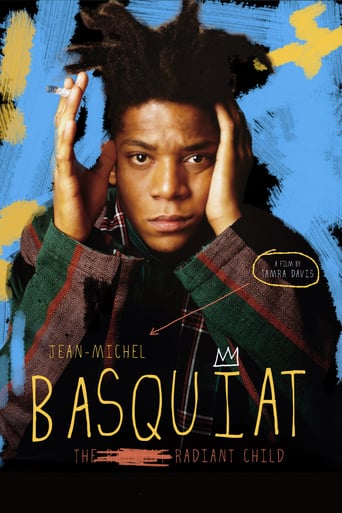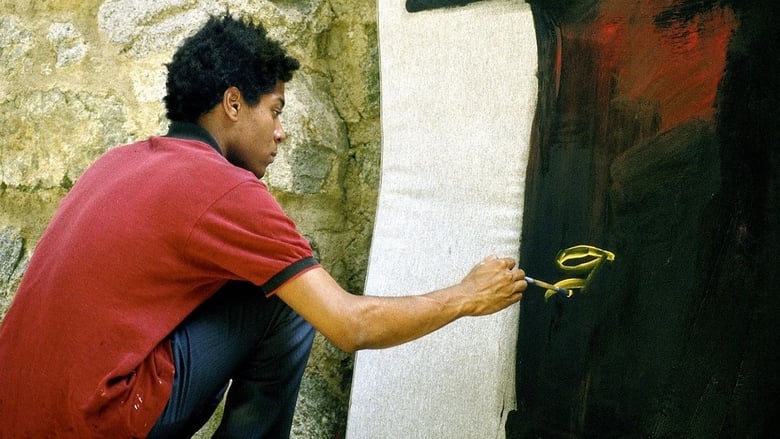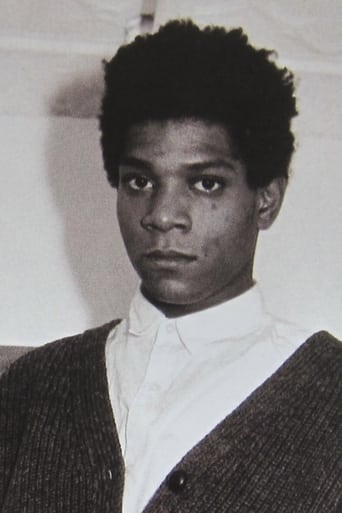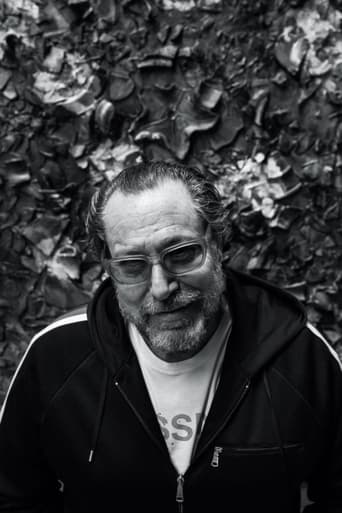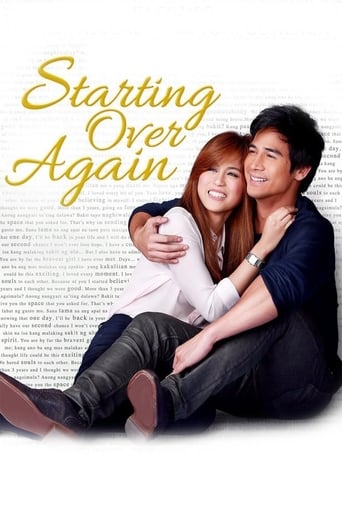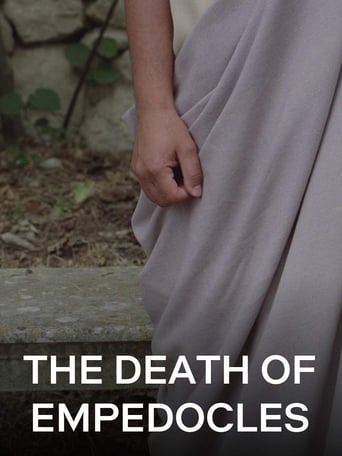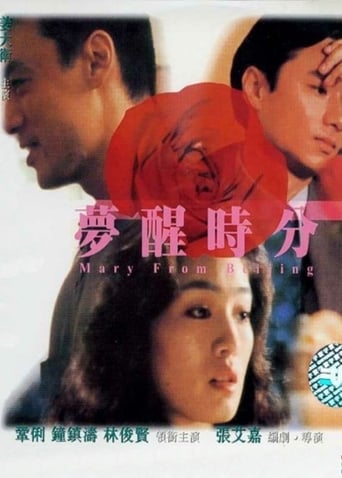Jean-Michel Basquiat: The Radiant Child (2010)
A thoughtful portrait of a renowned artist, this documentary shines the spotlight on New York City painter Jean-Michel Basquiat. Featuring extensive interviews conducted by Basquiat's friend, filmmaker Tamra Davis, the production reveals how he dealt with being a black artist in a predominantly white field. The film also explores Basquiat's rise in the art world, which led to a close relationship with Andy Warhol, and looks at how the young painter coped with acclaim, scrutiny and fame.
Watch Trailer
Cast


Similar titles
Reviews
The only good thing is that they edited and organized the whole segments very well but many important things are missing. First of all, it has very limited interviewees. There should be more than 10 people giving the information about Basquiat during 90 minutes. Second, there's not enough information about Basquiat's mother who could be the major influence of him, so as Andy Warhol. Third, there's no explanation about why Basquiat's art work is good basically. What they are representing through this documentary is "Basquiat is genius!" and that's all. Most of all, they claim Basquiat is a straight man. I don't really get this part and I still can't understand why they want him to be a straight man? Do they feel shame about the fact that he isn't? They somehow want Basquiat to be straight. Can't they tell by his paintings? Anyway, overall, it's a really poor documentary movie. There's no point at all. Who doesn't know Basquiat's a genius/radiant child?
Basquiat's artwork transcended the culture of the streets, circa 1980. He started out as a graffiti artist and rapidly become one of the world's coolest underground painters. The interview footage, if you've never seen clips of Jean-Michel Basquiat, puts the viewer into the perspective of his artwork, and conveys how his ideas were partly influenced from past artists, partly his immediate emotions, and wholly groundbreaking. He became known for crossing out words on the canvas, which indirectly strengthened the meaning of his avant-guard, street poetry. Basquiat was an innovative painter who was ahead of his time. His drive was about being totally original; that is, the very best, when it came to originality. As far as a documentary, "Jean-Michel Basquiat: the Radiant Child," works well. As soon as the director presents the eventful rise and fame of the subject, the film takes a righteous step back to discuss Basquiat's background and influences. In addition, documentaries about a single subject should never depict a person's life in chronological order; it becomes more like a Barbara Walter's special, and we don't want that. I think the audiences's predilection for this film will depend on their fascination for the subject at hand; the chaotic life of an artist, the rise and fall of a famed celebrity. I absolutely adore these stories. They usually start and finish the same, but sometimes, events take the turn for the worse, and the icon dies at a very young age. Jean-Michel Basquiat was only 27 when he died of a hot-heroin overdose. Fame, fortune, and loneliness drove his drug addiction to an unbearable end. When you hear these stories, sometimes these celebrities make it, and sometimes, they never get to live long enough to tell it themselves. Always pray for their recovery. Basquiat's work might have become more famous as a result of his death, but there's never a price too high for a persons life; not fame, fortune, or history in the making. I think the strength of documentary filmmaking deals primarily with the subject. If the viewer is drawn to the central figure, then it's really hard to objectively critique the way a documentary is filmed. Personally, I don't think "The Radiant Child" provides strong enough direction, but more importantly, a strong passion for the subject, Jean-Michel Basquiat, and it certainly shows. "The Radiant Child" lacks the spontaneity and hipness of "Exit through the Gift Shop" (2010), but any art lover, interested in the short, yet successful life of Basquiat, will certainly enjoy this documentary. Basquiat was so daring and conceptual with his work, that when he wanted to explore a traumatic event from his childhood, he would literally paint in the manner of a five year-old child . A child; he was far from it. Radiant; he was above and beyond.
For too long, the only Jean-Michel Basquiat we've had in film is Julian Schnabel's 1996 biopic (a good movie but heavily fictionalized), and the Downtown 81, a patchwork curiosity. I saw this doc with a bit of apprehension, worrying I might see a film of rehashed, superficial hype about some famous guy's famous coolness and his famous burnout. I came away really pleased. The doc is conventional, a no-frills mix of archive footage & contemporary interviews, but this works well - it left the focus on well-selected interviews and Basquiat's artwork, which the filmmaker apparently had free rein to use and did so liberally. The catalyst for this documentary is Tamra Davis's own footage of Basquiat (circa 1986/87?), and those sections are definitely a highlight.The substance comes from a surprisingly diverse collection of interviews, none of which wastes any screen time. There were the ex-girlfriends, old friends and art dealers, but Robert Farris Thompson, the Yale art professor who may have never met Basquiat, had some of the films most interesting comments. Diego Cortez ("I was sick of seeing white walls with white people drinking white wine") and Fab 5 Freddy both had lines that were hits with the audience. But still, the focus on Basquiat's artwork itself was the best thing here. Some of the most-repeated, least-interesting gossip I've heard about Basquiat are referenced (he dated Madonna, painted in an expensive suit, etc etc) but this is kept to a minimum. The weak link was too much reference to the mythical time Basquiat was "living on the streets" as a teenager. It's said he was living on the streets (or with girlfriends, to be more precise) because he was a broke kid determined to live in New York. But the record was also set straight about his background: he wasn't a genius who magically spawned from uneducated poverty. His family was well-off, he was exposed to art, music and intellectual thinking at an early age. And yet one of those interviewed got away with saying he couldn't handle the pressure of success because he'd only a little while before "he was living in the streets." The other odd omission was any information about the girlfriend Jennifer Goode despite several photos of her, when other women in his life were interviewed at length. Overall, very good work, and a must-see for anyone interested in the work of Basquiat.
This superb documentary, opening with Tamra's early interviews taped in her California home, reveals the tragically short but meteoric career of this talented, humorous, driven artist of the streets. It's an enlightening revelation of his work and his walk, including historical interviews with and recent reflections of contemporaries, friends and critics. The soundtrack drops you back into the clubs and streets of the time, with scenes syncopated to beats of jazz, early hip hop and pop. Basquiat seemed to have an internal receiver that picked up myriad cultural/racial/sexual revolution vibes from the air around him. He spent his waking hours furiously translating those messages into color and vocabulary on everything and anything around him. Black meets white, history meets contemporary, illiterate meets egalitarian. Clashes and confusion became the prolific stream of dialog for his brush and spray can: ee cummings + Michaelangelo commissioned by God to interpret society on the Vatican walls of Soho. And as the demands began to consume him, the gentle muse slept off into the mist.

